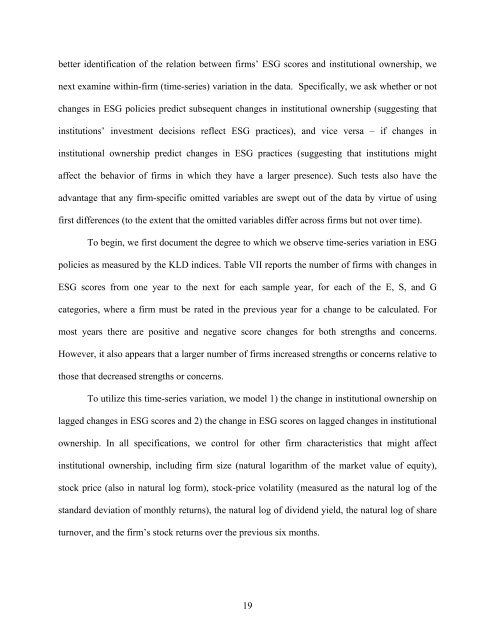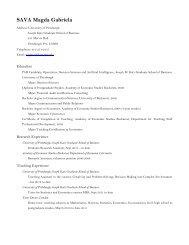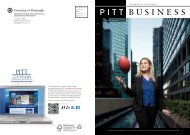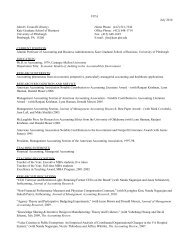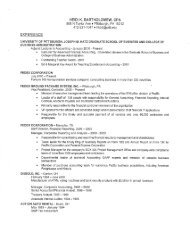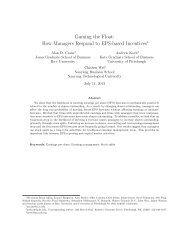Stuart L. Gillan, Jay C. Hartzell, Andrew Koch, and ... - Pitt Business
Stuart L. Gillan, Jay C. Hartzell, Andrew Koch, and ... - Pitt Business
Stuart L. Gillan, Jay C. Hartzell, Andrew Koch, and ... - Pitt Business
Create successful ePaper yourself
Turn your PDF publications into a flip-book with our unique Google optimized e-Paper software.
etter identification of the relation between firms’ ESG scores <strong>and</strong> institutional ownership, we<br />
next examine within-firm (time-series) variation in the data. Specifically, we ask whether or not<br />
changes in ESG policies predict subsequent changes in institutional ownership (suggesting that<br />
institutions’ investment decisions reflect ESG practices), <strong>and</strong> vice versa – if changes in<br />
institutional ownership predict changes in ESG practices (suggesting that institutions might<br />
affect the behavior of firms in which they have a larger presence). Such tests also have the<br />
advantage that any firm-specific omitted variables are swept out of the data by virtue of using<br />
first differences (to the extent that the omitted variables differ across firms but not over time).<br />
To begin, we first document the degree to which we observe time-series variation in ESG<br />
policies as measured by the KLD indices. Table VII reports the number of firms with changes in<br />
ESG scores from one year to the next for each sample year, for each of the E, S, <strong>and</strong> G<br />
categories, where a firm must be rated in the previous year for a change to be calculated. For<br />
most years there are positive <strong>and</strong> negative score changes for both strengths <strong>and</strong> concerns.<br />
However, it also appears that a larger number of firms increased strengths or concerns relative to<br />
those that decreased strengths or concerns.<br />
To utilize this time-series variation, we model 1) the change in institutional ownership on<br />
lagged changes in ESG scores <strong>and</strong> 2) the change in ESG scores on lagged changes in institutional<br />
ownership. In all specifications, we control for other firm characteristics that might affect<br />
institutional ownership, including firm size (natural logarithm of the market value of equity),<br />
stock price (also in natural log form), stock-price volatility (measured as the natural log of the<br />
st<strong>and</strong>ard deviation of monthly returns), the natural log of dividend yield, the natural log of share<br />
turnover, <strong>and</strong> the firm’s stock returns over the previous six months.<br />
19


